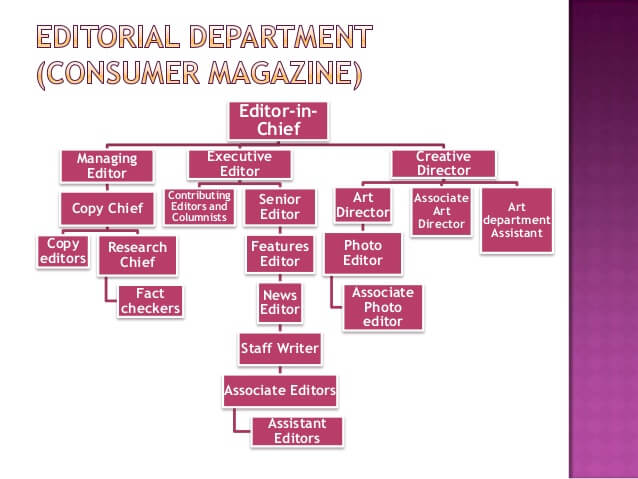When thinking about content communities, their history of best practices is often repeatable. Here are three main takeaways from this post:
#1. Our category of content community — like all examples of brand category creation — isn’t really new at all. It’s just been given a modern twist.
#2. The concept of content communities actually dates back thousands of years, with the Bible being a noteworthy example.
#3. When it comes to content marketing, the whole is greater than the sum of its parts, and your success relies heavily on the number of people involved.
In other words, we’re going to briefly examine the history of content communities. We’re also going to explain why your brand doesn’t need to reinvent the wheel when it comes to executing a content creation strategy. The best practices have been known and shown for centuries. You just need to know where to look.
In the beginning…
It’s easy to think of content creation and content marketing as recent phenomena. When I took on the role of content marketing manager back in 2008, it was a relatively rare title to have (the title of copywriter had long defined this function within companies). Fast forward to the present day, and the term “content” now returns close to 8 million search results on LinkedIn alone. During this time, content has been treated like the discovery of a tenth planet. It seems like almost everyone has taken a stab at defining what it is, why it matters, how to measure it, and most importantly, how to do it effectively.
Unfortunately, this collective advice has led us to the sad state of affairs in the content creation space today, where:
- Individual content marketing managers do almost all of the writing
- Writer burnout is rampant
- Content mills churn out low-quality, irrelevant material
- Many brands go silent for weeks and months
- Writing teams are fragmented
The list goes on. But what if these brands, instead of following the trendy advice, had followed content creation examples set in the past? What might they have learned? And what might they be doing diffidently today? To answer those questions, we’re going to highlight three amazing examples of content creation that you’ve probably never considered.
Newspapers
Okay, you might have considered this one, but we’re talking about it anyway. Millions of marketers have heard the phrase “think like a publisher.” It’s a well-received message but often misinterpreted. It’s taken to mean that a brand must create original, relevant, and compelling content for its audience (i.e., not marketing fluff pieces). This is true, but it’s only half the battle. The other half of “thinking like a publisher” is figuring out how many people need to be involved. (Hint: the answer is greater than one).

Think of how a newspaper operates:
- An editor-in-chief makes all of the high-level decisions around finances, hiring, tone, mission, etc.
- A managing editor assigns reporters, manages deadlines, approves stories, etc.
- Staff writers cover events, research, and deliver articles on a regular basis
- Copy editors ensure that all material is fit to print
- Designers & photographers design things and take pictures
- Guest columnists contribute op-eds on a semi-regular basis
This is grossly oversimplified, but hopefully, it’s making a point: content creation is not a one-person job. If you’re serious about content and truly believe that you should look more like a publisher than a marketing department, then you’d be wise to start thinking about content as a multi-person effort, even if you’re small. More on that soon.
Encyclopedias
Did you know that one guy wrote the entire Encyclopedia Britannica? He spent years becoming a subject matter expert in..well, everything. Then he wrote it all. Yup, that’s what happened. Pretty cool.
Just kidding. Encyclopedia Britannica was actually a joint effort of 100 full-time editors and more than 4,000 contributors, which included 110 Nobel Prize winners and five American presidents.

For a project of this scope, that’s literally the only way it could have been done. Not only did it require numerous people for bandwidth alone, but it also required people with specific subject matter expertise. These scholars had spent their lives learning about chemistry, history, mathematics, giraffes, and astrology. These volumes couldn’t skim the surface. They had to be deep dives.
Contrast this approach to the one taken by modern brands, where a significant portion of the material is written by 1-2 lone contributors, who may or may not be subject matter experts in the topics covered. They don’t achieve 1/1000th of the quality or quantity reached by their encyclopedia counterparts.
At a previous job, I was guilty of this offense.
The topic was software testing. I had never been a software tester. I knew little about the craft. But I wrote about it, day after day, pretending as I did. Soon, I realized that a different approach would yield better results for both quality and quantity. Instead of writing everything myself, I would get our product team, our engineers, and our executives to contribute content. These people really knew the space. I also started interviewing the top authors and speakers in the software testing space. They knew even more.
Before long, we were churning out true thought-leadership content — on a daily basis — from true subject matter experts.
If the goal of content is to position your brand as a trusted authority (and this IS the goal), then it cannot be faked, and it cannot be the result of one person’s efforts.
The Bible
Spoiler alerts ahead! Though the Bible is said to be the Word of God, it’s commonly accepted by religious scholars that the books were written by numerous authors over the course of several centuries (depending on the version, of course). What makes the Bible and other religious texts such great examples of content communities isn’t the fact that numerous authors were involved; it’s that the stories were told with such consistency. Without prior knowledge, it would be very hard to tell that multiple people played a part in its creation.
Not only is this true of the language and tone but also in regards to the teachings, lessons, and general philosophy. It’s a seamless story, told by multiple people, which in some cases has been adapted and re-purposed over thousands of years. It’s really quite remarkable.
Obsession with tone and style is one factor that prevents modern-day brands from telling a larger story.
They:
- see themselves as the only ones who “get it”
- are unable to hand off their story to anyone else
- may have tried letting other people contribute, but they dislike content delivered by outsiders
Rarely can they articulate why? Here’s the worst part, though: when these people leave the organization, the brand story leaves with them. The entire content operation was dependent on them. Everything will need to be rebuilt from scratch.
As a brand, you want your story to be told through the ages (or at least a few decades). You don’t want it to be dependent on 1-2 people. You want a brand vision so well-defined and well-documented that hundreds or even thousands of people are able to be a part of it. It’s a lofty goal in terms of content marketing, but why not set your sights a little higher than page views and backlinks?
Common Themes in Content Communities
With each of these examples, we’ve identified a few common themes to running a successful, scalable content operation:
- Quality AND Quantity: Nowhere did we mention having to decide between quality and quality. These examples showed that both can be achieved.
- Multiple contributors: None of these examples relied too heavily on one person (even God had some help)
- Consistency: All examples showed how consistency across tone, style, and story can be achieved
- Role of the Editor: Most importantly, each example showed how critical the role of the managing editor was, and the importance of delegation
Today, although rare, you can find modern examples of brands that are putting these principles into action. Our goal is to help you become one of them.
Content Communities: Same As It Ever Was
Over the next few years, you’re going to hear us talk A LOT about content communities: a method of publishing that combines in-house talent, freelance writers, and industry thought leaders. Much of it will seem new and maybe even a bit trendy. But just remember that this is the way great content has always been written. There’s truly nothing new under the sun.
